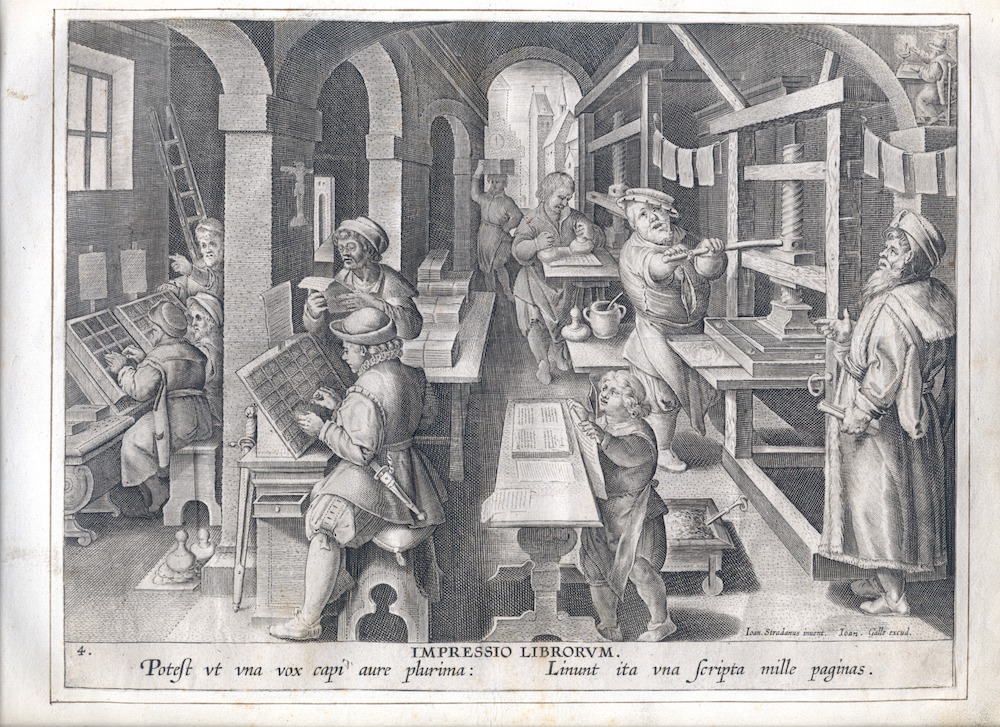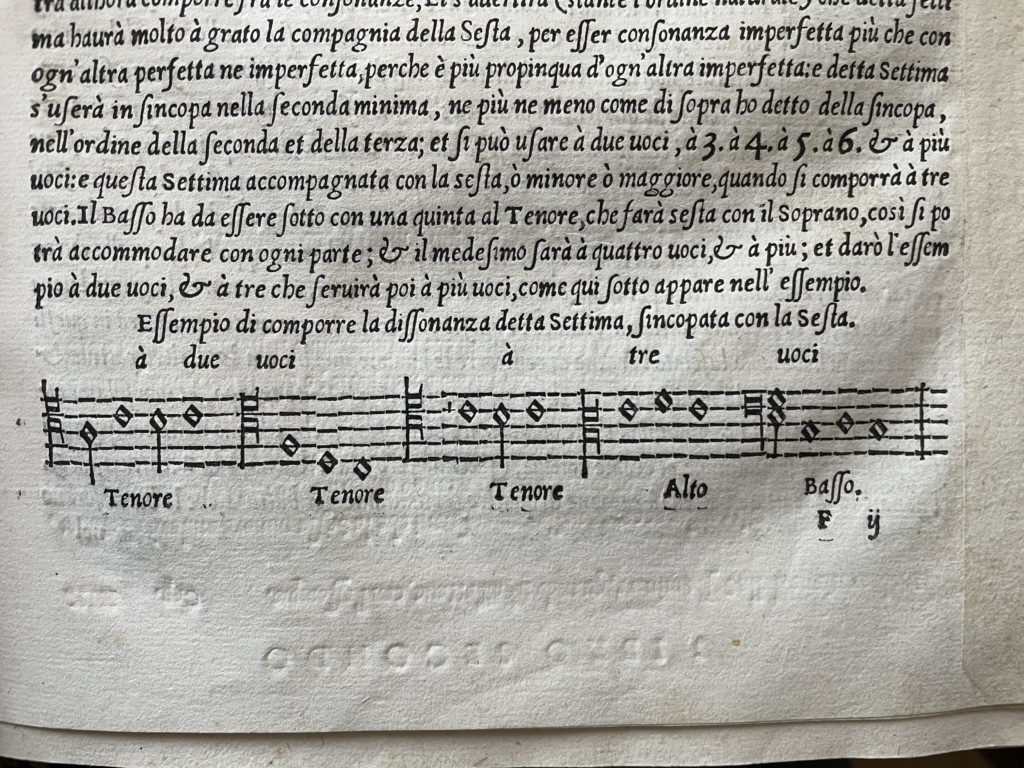Editing Vicentino’s «L’antica musica ridotta alla moderna prattica» (Rome 1555): Critical and Bibliographical Perspectives
The present research project intends to investigate the historical, intellectual and musical context in which Nicola Vicentino (1510–1577) conceived his complex vision of music theory and musical praxis, transmitted in the treatise L’antica musica ridotta alla moderna prattica, published in Rome in 1555. The work in preparing the critical edition of this fundamental text for the Renaissance music theory, conceived according to the latest methods in the field of analytical bibliography and textual criticism and offered in an innovative digital format, will be structured in several stages.
Aim of the first phase is a systematic investigation of the transmission Vicentino’s treatise through an extensive survey of all known copies of the print.
According to Fredson Bowers, the textual bibliography deals with the content of a book ‘not […] as symbols instantaneously to be resolved into meaningful concepts in the mind’, but ‘as simple inked shapes, imprinted on paper from pieces of metal systematically selected and arranged by some human agent, the compositor’ (Bowers 1964, p. 27). The distinction between textual bibliography and textual criticism has been reiterated by Philip Gaskell: in his opinion, ‘textual bibliography and textual criticism adapted to the analogous but not identical problems of editing printed texts’ (Gaskell 1974, p. 336). However, these two investigation areas are closely connected. As Conor Fahy observed, the extension of the concept of textual bibliography to the critical operation of editing sixteenth-century texts is justified by the particular conditions that the print transmission imposes on the text. For a Renaissance book, it is not true that all copies of an edition count as a single witness. The typographic process is the result of the organic work of different individualities, who may have interacted in a complex way with the text. The compositor had a very important role. He was responsible for the material alignment of all typefaces forming each word of the text within the printing forms.Another important figure is the proofreader. He may have made changes to the text both during and at the end of the printing process. These corrections may have been randomly distributed within the copies of an edition because of the casual combination of sheets corrected at different times. Seemingly identical copies of a Renaissance edition can be therefore contain slightly to considerably variants.

The question becomes even more complicated if the author, as probably in the case of Vicentino, was directly involved in the editorial process, entrusted to a publisher at the beginning of his activity, as Antonio Barré in Rome, who had to print a very complex text on music theory.
This investigation, which has never been carried out systematically on Vicentino’s treatise, will be structured in three stages:
- A census of all preserved copies of the print
- A collation of all copies, either through an autopsy of the originals and the use of new digital investigation tools
- A detailed survey of all interventions made during the printing process.

It will provide significant data to clarify several questions concerning the editorial history of Vicentino’s treatise:
- The stages of the editorial process
- The production of various editions using different types of paper
- The purpose of the additional materials, such as the plates illustrating the keyboards of the archicembalo, apparently not present in all copies
- The relationship between the two editions of the treatise, dated 1555 and 1557 respectively.
This investigation will also provide new information on Barré’s activity as music printer and publisher in mid-sixteenth century Rome and, more generally, on the editorial history of one of the most significant Renaissance book on music theory.
After this first phase, the critical analysis of the text will be carried out. The evaluation of the variants emerged from the collation will allow to highlight possible dynamics in its definition process. With the aim to produce a digital critical edition, the text will be transcribed according to the parameters of the Text Encoding Initiative (TEI).
At a third stage, it will be carried out at critical investigation of all annotations, ex-libris, marginal comments and traces of use in order to obtain information on the history of the transmission of Vicentino’s treatise and on the way in which his theoretical thought has been read and understood.
Reference Literature
Fredson Bowers, Bibliography and Textual Criticism, Oxford: Claredon Press, 1964.
Conor Fahy, «Correzioni ed errori avvenuti durante la tiratura secondo uno stampatore del Cinquecento: contributo alla storia della tecnica tipografica in Italia», in: Lettere Italiane 27 (1975), 184–192.
Conor Fahy, «Introduzione alla bibliografia testuale», in: La Bibliofilia 82 (1980), 151–180.
D. C. Greetham, Textual Scholarship: An Introduction, New York, London: Garland, 1994.
Philip Gaskell, A New Introduction to Bibliography, Oxford: Claredon Press, 1974.
Donald W. Krummel, Bibliographies: Their Aims and Methods, London, New York: Mansell, 1984.
Steven W. May, «Collecting Multiple Copies of Renaissance Texts», in: A Handbook of Editing Early Modern Texts, ed. Claire Loffman and Harriet Phillips, London: Routledge, 2018, 84–89.
Andrew Pettegree, The Book in the Renaissance, New Haven: Yale University Press, 2011.
Amedeo Quondam, «La letteratura in tipografia», in: Letteratura italiana. Vol. II. Produzione e consumo, Torino: Einaudi, 1983, 555–686.
G. Thomas Tanselle, «The Concept of Ideal Copy», in: Studies in Bibliography 33 (1980), 18–53.
TEI – Text Encoding Initiative. https://tei-c.org
Ronald L. Troxel, «What is the ‘Text’ in Textual Criticism?», in: Vetus Testamentum 66 (2016), 603–626.
Sebastian Verweij, «Print Collation», in: A Handbook of Editing Early Modern Texts, ed. Claire Loffman and Harriet Phillips, London: Routledge, 2018, 89–93.
Giuseppina Zappella, Il libro antico a stampa: struttura, tecniche, tipologie, evoluzione, 2 vols, Milano: Editrice Bibliografica, 2001.
Comments
No comment posted about Editing Vicentino’s «L’antica musica ridotta alla moderna prattica» (Rome 1555): Critical and Bibliographical Perspectives